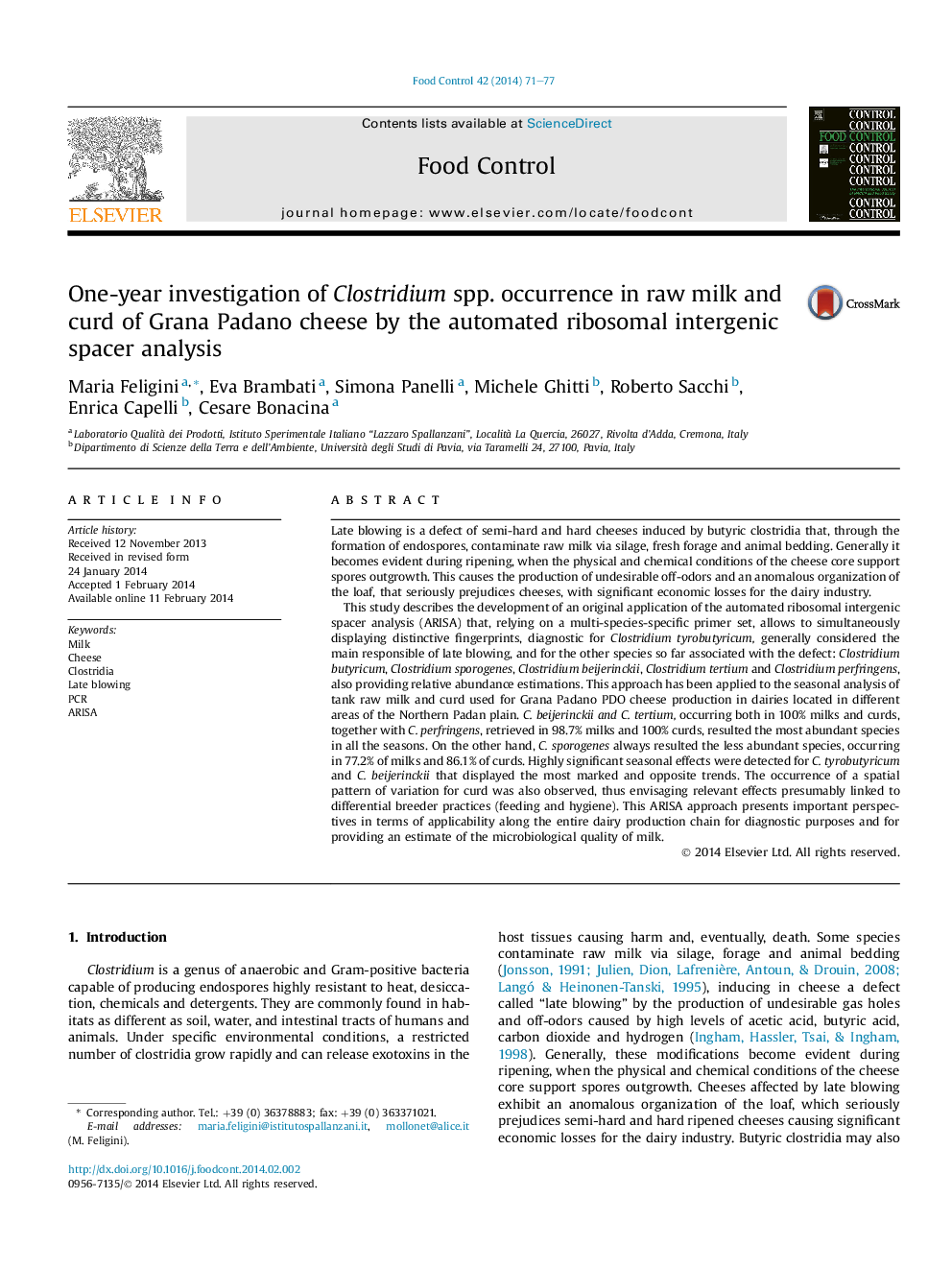| کد مقاله | کد نشریه | سال انتشار | مقاله انگلیسی | نسخه تمام متن |
|---|---|---|---|---|
| 6391646 | 1628420 | 2014 | 7 صفحه PDF | دانلود رایگان |

- Late blowing is a defect of semi-hard and hard cheese induced by butyric clostridia.
- This study developed an original application of ARISA for diagnostic purpose.
- Six Clostridium species were simultaneously detected and estimated in abundance.
- The approach was tested on tank raw milk and curd of Grana Padano.
- Important applicative perspectives and spatio-temporal effects are discussed.
Late blowing is a defect of semi-hard and hard cheeses induced by butyric clostridia that, through the formation of endospores, contaminate raw milk via silage, fresh forage and animal bedding. Generally it becomes evident during ripening, when the physical and chemical conditions of the cheese core support spores outgrowth. This causes the production of undesirable off-odors and an anomalous organization of the loaf, that seriously prejudices cheeses, with significant economic losses for the dairy industry.This study describes the development of an original application of the automated ribosomal intergenic spacer analysis (ARISA) that, relying on a multi-species-specific primer set, allows to simultaneously displaying distinctive fingerprints, diagnostic for Clostridium tyrobutyricum, generally considered the main responsible of late blowing, and for the other species so far associated with the defect: Clostridium butyricum, Clostridium sporogenes, Clostridium beijerinckii, Clostridium tertium and Clostridium perfringens, also providing relative abundance estimations. This approach has been applied to the seasonal analysis of tank raw milk and curd used for Grana Padano PDO cheese production in dairies located in different areas of the Northern Padan plain. C. beijerinckii and C. tertium, occurring both in 100% milks and curds, together with C. perfringens, retrieved in 98.7% milks and 100% curds, resulted the most abundant species in all the seasons. On the other hand, C. sporogenes always resulted the less abundant species, occurring in 77.2% of milks and 86.1% of curds. Highly significant seasonal effects were detected for C. tyrobutyricum and C. beijerinckii that displayed the most marked and opposite trends. The occurrence of a spatial pattern of variation for curd was also observed, thus envisaging relevant effects presumably linked to differential breeder practices (feeding and hygiene). This ARISA approach presents important perspectives in terms of applicability along the entire dairy production chain for diagnostic purposes and for providing an estimate of the microbiological quality of milk.
Journal: Food Control - Volume 42, August 2014, Pages 71-77